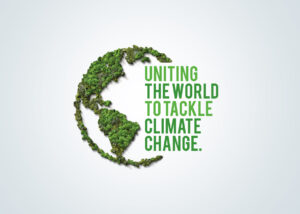Is PR up to the task on ESG?
Mark Weiner and Tina McCorkindale ask tough questions about messages on climate and social good from companies big and small.

Mark: Tina, these are good times for public relations: Agencies and their holding companies are reporting great results. And ESG (environmental, social and governance issues) is fueling a lot of PR’s growth.
Sure, ESG is a good thing for the planet and the beings that live here. But, let me play the devil’s advocate: Everyone in PR seems to want a piece of the ESG pie. But how many communicators are true experts in this field? I fear there are not as many as what the gold rush makes it seem. I also fear that many firms will mess up in the end.
And if I’m right, we will have lost a great opportunity to demonstrate PR’s value and contribution to business.
Tina: Mark, I am definitely an optimist, but a cautious one. While I think these “trends” are great for our profession, I do think there are some areas where we fall short. ESG, which has seen increasing importance in our field and for organizations, is moving from that “nice to have” to be table stakes, much like corporate social responsibility was during its heyday.
Mark: Yes, ESG is now as much a financial imperative as it is a reputational attribute. Money is flowing based on ESG scores.
But for me, there’s irony in business’ rapid response to ESG. In keeping with our tradition to weave popular culture into our essays, I have one for ESG, too, courtesy of my friend John Friedman, managing director of ESG at Grant Thornton. John refers to ESG within the context of the “Batman/Bruce Wayne paradox.”
Batman’s alter-ego is the millionaire Bruce Wayne. Batman’s arch nemesis, the Joker, became a villain after he fell into a vat of toxic chemicals at Wayne Enterprises. So Batman spends his nights compensating for what Bruce Wayne and Wayne Enterprises do during the day…and money alone is not enough. He fights the enemies he created. Returning to modern day reality, companies who clean up their own messes could do better if they simply never made the mess to begin with. And good business logic demands ESG compliance: The companies who actively practice ESG attract and retain the best talent, charge higher prices, pay lower prices for raw materials and they succeed in the marketplace.
Communication is essential for the ESG movement to succeed. We know how to communicate, but do we know ESG well enough for every agency to tout their expertise?
Tina: First, of course I know Batman. My 8-year-old is obsessed with Spiderman and would tell you that Batman is DC and not Marvel (yes, he is biased).
Back to our story, I think the principle of requisite variety comes into play here. Requisite variety means that these complex issues deserve the same level of resources and complexity as there is in the issue itself, so companies really have to dive in to solve these problems. This is one of Bill Gates’s points within his book “How to Avoid a Climate Disaster.”
I don’t think some companies are doing that with ESG. It’s still treated as an offshoot for some; planting trees isn’t going to drive impact and change. I loved what Gates said about what we need to do. We need to find environmental solutions for all five activities we do: making things, plugging in, growing things, getting around, and keeping cool and warm. We must have zero-carbon approaches. But how that happens depends on the communication function. If a communications leader focuses on the social part of ESG and works with corporate governance, there is definitely a role to play for comms with the “E.” If the company has a chief sustainability officer, communication leaders must work with them to communicate effectively to both external and internal audiences and drive attitude and behavior change. But the substance for sustainability and change has to be there.
Mark: I agree., but I wonder: How far PR can go before we overdo it and blow the opportunity? I support ESG and I advocate for public relations, but does public relations have sufficient ESG expertise to make a material contribution in every case?
Are those in pursuit of “ESG business” being grabby and short-sighted or is this “just business?”
Tina: With everything we do, we have to get that expertise if there is a gap.
Communications is a core strategic partner within organizations, so we touch so many parts. I think piling these “non-financial indicators,” which are actually becoming core financial indicators, requires a lot of work and many companies haven’t figured out the right combination. What I will tell you is there is absolutely a lot of greenwashing happening. Some companies that treated CSR as a side arm of an organization are doing the same with the sustainability part of the organization. What do you think, Mark?
Mark: Beyond bettering our planet, my thoughts are focused on the potential for ESG to elevate the profession, assuming we don’t blow it.
ESG ratings for companies finally enable reputation to have a quantifiable value on the balance sheet. Forever, accountants and financial analysts referred to reputation as an “intangible asset.” Now, the ratings agencies like Morningstar and Moody’s are affixing a value to reputation based, in large part, on ESG ratings. Buy and sell decisions are made using this score. Reputation is now tangible and quantifiable.
And while reputation is the responsibility of everyone within an organization, it tends to be the domain of corporate communications, public relations and the CEO. This elevates the profession, and I love that aspect of ESG and its impact on PR. There’s a lot riding on this.
Tina: Absolutely. It’s just important that these ESG indicators are actually valid performance metrics and not made up for the purpose of patting one another on the back. Is it actually driving impact and change in society? Is the metric actually measuring how companies are reducing their footprint and making a difference on social issues, or is it primarily tied to the perceptions of a company’s reputation?
Mark: Financial analysts continue to refine their thinking about ESG scores, so there is no universally accepted computation. How companies behave must count for more than what a company communicates about itself. At least for now, interested stakeholders need to do their research.
In the end, companies must walk the talk. While Commissioner Gordon and the bat signal help him, the Dark Knight doesn’t wait for evil-doers to come to him; he goes after them! We must do the same. Just as all PR firms are not ESG experts, not every vigilante is qualified to be another Batman.
In describing the difference between Batman and a vigilante, Batman’s mentor Henri Ducard, says, “A vigilante is just a man lost in the scramble for his own gratification.” In our pursuit of ESG awareness, are we in PR up to the standards of Batman or are we simply vigilantes?
Tina McCorkindale, Ph.D is the CEO of The Institute for Public Relations
Mark Weiner is Chief Insights Officer at PublicRelay and the author of “PR Technology, Data and Insights.”






